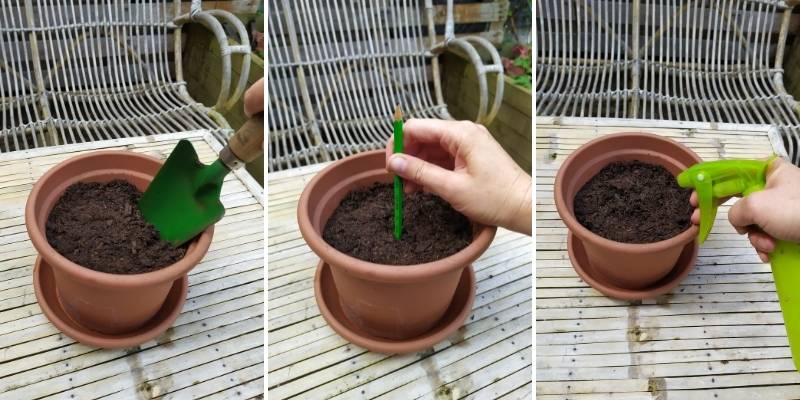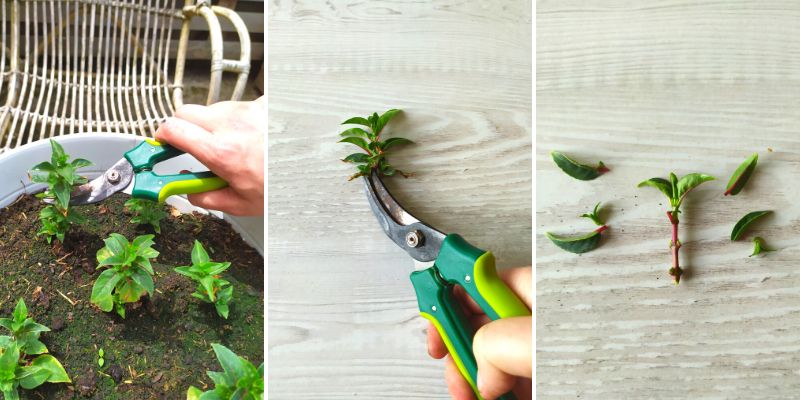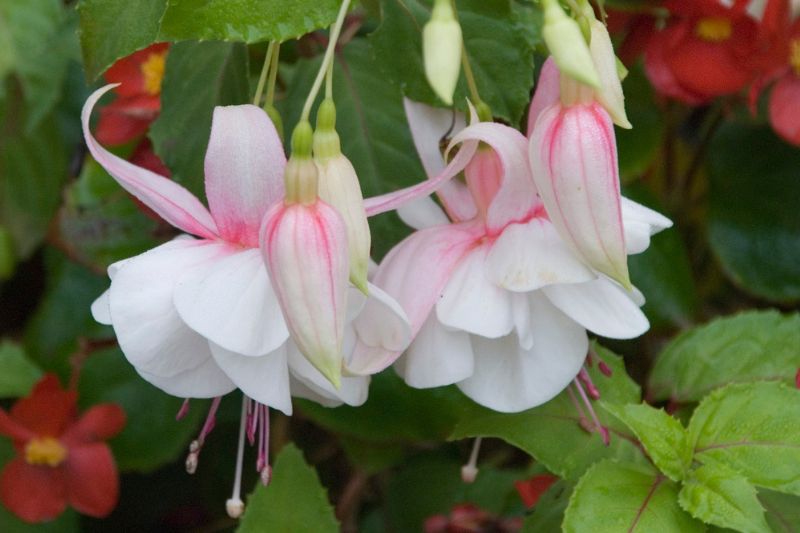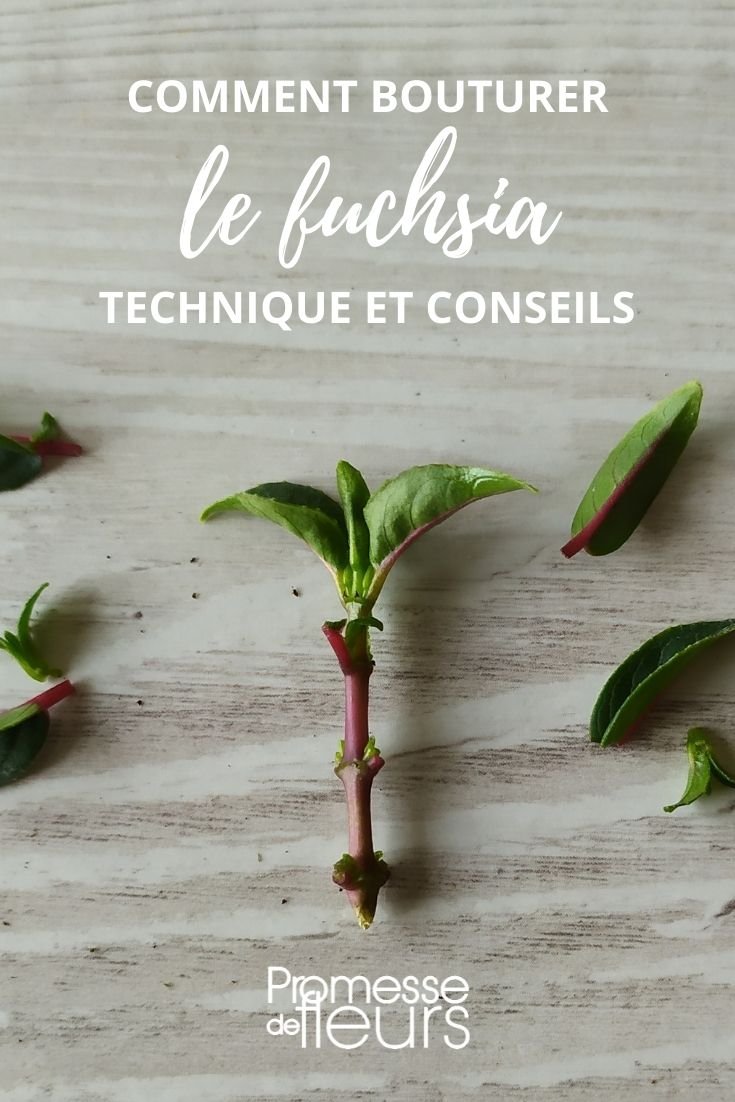One never tires of admiring the charming drooping bell-shaped flowers of fuchsias. Whether white, pink, mauve, red or purple, they decorate hanging baskets and pots on a terrace beautifully, but also flowerbeds and borders in the garden. Appreciated also for long summer flowering from June to October. Easy to grow, fuchsia is also simple and quick to propagate by cuttings. Discover how to propagate a Fuchsia through our tutorial and advice.
When to take fuchsia cuttings?
Fuchsia propagation by cuttings is mainly carried out in August, using covered cuttings. These are also called "aoûtées". Sunshine and warmth at this time favour good root development of cuttings. This produces good results and higher success rates.
Note that you can also take advantage of pinching fuchsias from June to make cuttings. This is the technique used in this tutorial.
Materials required
To take fuchsia cuttings you will need:
- one or several pots or large buckets, preferably biodegradable
- a pencil
- a spray bottle
- a pruning shear (cleaned and disinfected before use to avoid transfer of disease between plants)
- a cloche or a plastic bottle or a plastic bag or a mini greenhouse to cover the cuttings.
- Seed and potting compost or a mix of 2/3 turf and 1/3 garden sand
- clay balls
- facultative: a rooting activator
How to take fuchsia cuttings under cover?
1- Pour clay balls into bottom of pot to depth of 2 to 3 cm to improve drainage.
2- Then fill pot with seed and potting compost up to 2 cm from rim and press down lightly by hand.
3- Use pencil to make a hole 1 to 2 cm deep.
4- Moisten compost with spray bottle, preferably using rainwater. Substrate should be moist without being waterlogged.

Make a hole 1 to 2 cm deep and moisten compost
5- From your fuchsia, take shoots from the tips, preferably without flowers. They should measure between 4 and 10 cm in length and have 3 to 4 sets of leaves. To be sure of obtaining at least one viable cutting, we recommend taking 4 to 5 fuchsia cuttings.
6- Using the pruning shear, remove any flowers and flower buds.
7- Remove lower leaves from the cutting and keep only half of the upper leaves. Too many leaves will exhaust the cutting due to transpiration of the foliage.

Here the stem is taken from a young fuchsia that is to be pinched. Two advantages: on one hand a cutting is obtained, on the other the pinched fuchsia will produce two shoots and therefore more flowers.
8- Facultative: to optimise results, you can gently dip the base of the stem into a plant hormone to aid root development.
9- Plant the cutting in the pot.
10- Firm the compost around the cutting to hold it upright.
10- Place over the stem a cloche or a plastic bottle without base or a clear bag held by stakes. The cloche will saturate the cuttings' atmosphere with humidity, which will favour root development. Careful: stem and leaves must not touch the cloche, otherwise there is risk of mould development!

Plant the stem and set up a cloche (here the top of a plastic bottle) to make a covered cutting
11- Water regularly to keep compost always slightly moist but without excess. Every 3 to 4 days, lift the cloche for half an hour to renew the air.
12- Place the pot in a bright position, but not in direct sun.
13- Unlike cuttings from bushes, fuchsias form roots very quickly. After 2 to 3 weeks you should see new leaves appearing, sign of root development. Yes, very quick! You can then remove the cloche.
14- Then, if your fuchsia cutting is in a biodegradable bucket, you can plant it out in the ground with its pot. The biodegradable bucket thus avoids stress from repotting. You can also re-pot it into a pot, a container or a hanging basket.
Care of young fuchsias
- If variety of your young fuchsia is not very hardy, consider protecting it from cold by storing in a bright unheated room or in a cold greenhouse over winter.
- At end of winter and early spring: prune fuchsia by cutting back to half its height.
- For potted fuchsias: in spring and during flowering, give liquid feed (type for geraniums) every 15 days. Do not use feeds too rich in nitrogen, which would limit flowering.
- For fuchsias planted in ground: apply well-rotted compost around the base in spring. Blood meal or horn meal give good results when incorporated into soil by forking.
- In June, remember to pinch shoots to obtain abundant flowering
To go further :
- Find all our annual fuchsia varieties, as well as our perennial fuchsias.
- To learn more, read our fact sheet on fuchsia: planting, pruning, growing and care
- Discover our advice sheet: “Propagation by cuttings: everything you need to know about different techniques and our advice for successful cuttings”.

































Comments